#rugosity
Text

[Rugosity.]
4 notes
·
View notes
Text



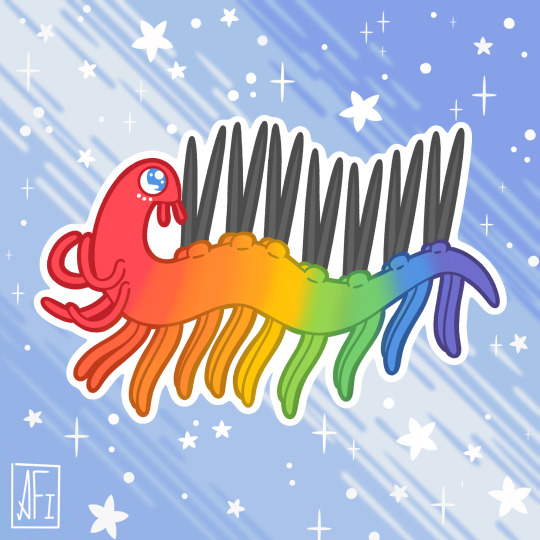


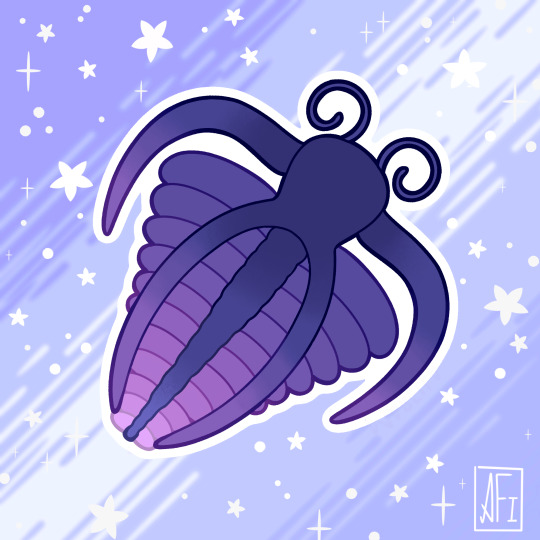
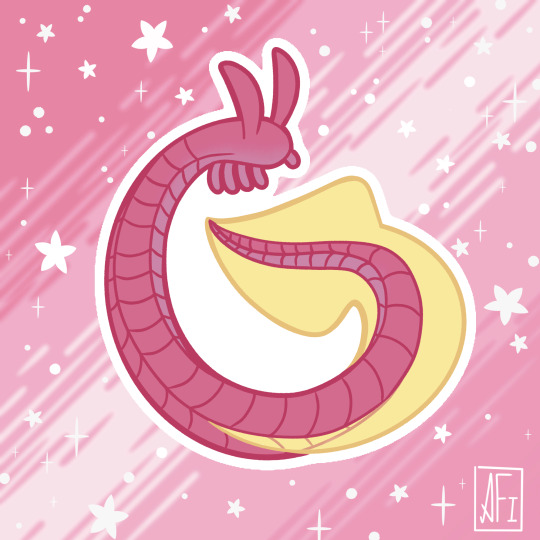
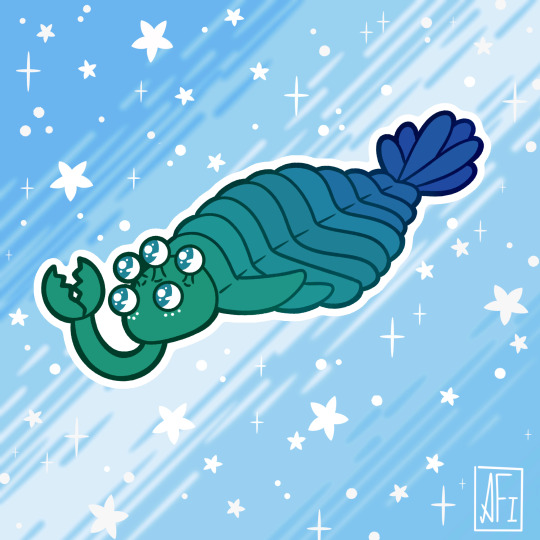






My entire Cambrian Catalogue!
Anomalocaris - Canadaspis - Eldonia
Hallucigenia - Helicoplacus - Hurdia
Marella - Pikaia - Opabinia
Haikoucaris - Wiwaxia - Paradoxides
Pomatrum - Rugose Coral - Vetuicola
Are there any missing here that you'd like to see?
#my art#paleontology#paleoart#science#cambrian#anomalocaris#canadaspis#eldonia#hallucigenia#helicoplacus#hurdia#marella#pikaia#opabinia#haikoucaris#wiwaxia#paradoxides#pomatrum#rugose coral#vetuicola
308 notes
·
View notes
Text
@snkl-frtz submitted: I'm pretty sure this is a rhinoceros beetle, seen near to Goldstream Falls on Vancouver Island. He was so wee and landed for maybe fifteen seconds before taking off again.


Despite the deceptive horn, this lovely man is a stag beetle rather than a rhinoceros beetle. Specifically a rugose stag beetle, Sinodendron rugosum.
176 notes
·
View notes
Text
i was trying to find cool coral species to name my dumbass after but i found a vape.

literally the side order vape

so of course i had to draw em trying and failing to smoke it
#side order#splatoon#splatoon 3#coral [oc]#coral collective [oc]#rugose [oc]#klug's ocs#klug's sketches#smoking cw
21 notes
·
View notes
Text

Lesbian Pride flag + Rugose coral sketch to celebrate the Lesbian Visibility Week.
Personal use with credit welcome and encouraged ^^
#lesbian visibility week#lesbian visibility#lesbian pride#lesbian week#lesbian love#rugose coral#paleo coral#coral art#paleoart#pride in STEM#lesbian in STEM
8 notes
·
View notes
Text
Every so often, rotating posts in your mind on tumblr dot hell as you do, you find yourself face to squamous tendril with a previously undescribed Lovecraftian discourse monster, and you have to figure out how the hell to provide a scientific description of the beast.
Which is to say: I have identified a gap in how people talk about queer representation. A gap both so wide and so unnoticed that it contributes largely to misunderstandings, accusations, flamewars, and callouts.
You, and each of us, likely agree with one and only one of these two statements:
* "Queer representation includes any explicit depiction of queer activity, negative or positive. An evil lesbian dominatrix who uses hitting on the heroine to demonstrate her evil, a same-sex teacher/underage student relationship, or an unpleasant and unattractive authority figure shown with a harem of multiple sexes, are all technically queer representation. Additionally, having queer representation does not by itself make a work more valuable or less valuable."
* "Queer representation is a positive factor that always makes a work more valuable. Therefore, it is extremely important to select carefully among depictions of queer activity, and apply the positive label of Representation only to the ones that we personally identify with and/or wish people to emulate. Additionally, if a person describes a specific depiction as Representation, it is certain that the person identifies with it personally and/or wishes people to emulate it."
As you can see, a person who agrees with the second statement is likely to be absolutely horrified by some of the things that get called "queer representation" by a person who agrees with the first statement -- because they believe that calling something queer representation is an endorsement of the *kind* of queer behavior it depicts, that only socially desirable queer behavior can be called Representation.
At the same time, a person who agrees with the first statement is likely to be baffled and frustrated by some of the things that get called "not queer representation" by a person who agrees with the second statement -- because they believe that denying something the title of Representation requires either a denial that it was queer (or "queer enough"), or a denial that it was depicted.
(I, being a person on the internet, also agree with one and only one of these two statements, but I am trying very hard to represent both of them accurately. And I think it would probably be very helpful to clarity if we could all consider that both viewpoints exist, when having conversations about depictions of queerness in media.)
9 notes
·
View notes
Text
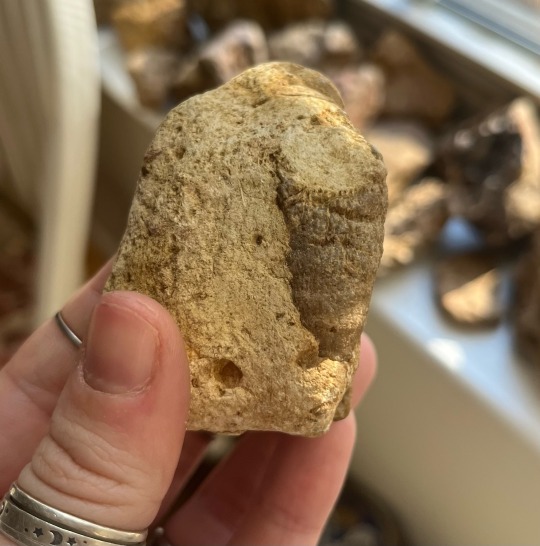
I found a new fossil spot and found my best horn coral yet!
#fossils#fossil#horn coral#rugose coral#coral fossil#fossil collection#rock collection#river rocks#river find#paleontology#palaeontology#paleoblr#palaeoblr
55 notes
·
View notes
Text


Found a Petoskey Stone in our yard yesterday! Not a usual place for such a find but I'll take it.
Petoskey Stones are fossils of six-sided rugose coral. They are formed by glaciers picking them up from the bedrock and grinding them smooth. Later they were deposited along mostly the northwestern area of Michigan's lower peninsula. ~ Matteo
Shop for Petoskey Stone products and other Nature Morte items at Metz & Matteo!
#naturemorte#fossil#fossils#michigan#michiganstatestone#Petoskey#petoskeystone#homedecor#photography#stilllife#stilllifephotography#surprise#surprisefind#lookatmycoolstone#rockcollecting#lookatmycoolrock#yardwork#springcleaning#rugose#rugosecoral#hexagonariapercarinata#fossilizedcoral
3 notes
·
View notes
Text
Good to see some former HMNS volunteers and such have found my page. Alas, I very rarely post anything from my position there but it does come up occasionally.

(Although I have been known to occasionally get a little silly)
6 notes
·
View notes
Note
Could you give any advice for "descriptive" writing of any scene or action scenes or mapping out the scenery (Mountains, forests, streets etc) - i believe this is a struggle for Non-English speaking writers due to lack of vast vocabulary.
Common Scenery Description Tips
Vocabulary is clearly an important part of description, but it doesn’t have to be a limit. The most important thing about description in fiction is picking the right details to mention:
How does the details add to the mood of the story? A mountain ridge will be dark, gray and foggy if the overall mood is meant to be mysterious/brooding. In contrast, a mountain can be brilliantly snow-capped, lush green and “smiling down” upon the character if they’re out for a light stroll.
How are the contrasts/complementary aspects being brought out?
Are you using the five senses? You can even combine the senses, ie. blue ringing of the church bells
(If you have the POV character) what
Some other tips for setting description:
Use similes and metaphors. Creative figures of speech always get my attention as a reader.
Mention story-specific elements. For example, “The sky was the shade of Zoes’ eyes” or “the mountains looked like a group of trolls sleeping on one another”
Be concise. Today’s readers don’t want to read paragraphs and paragraphs about one landscape. Outline the larger elements in the scene, their location and general mood. Add some details, then move on.
If the same location appears multiple times, differentiate the description little by little as you write, instead of trying to lay out one scene in too much detail at once.
That said, here are some helpful words/phrases:
Forests/Mountains
Color: bone-white, phantom-white, hazy gray
Sound: rumbling, booming grumbling, bellowing clapping, trundling, growling, thundering
Shape: crinkled, crumpled, knotted, grizzled, rumpled, wrinkled, craggy, jagged, gnarled, rugose
Action: sky-punching/stabbing/piercing/spearing, heaven-touching/kissing, snow-cloaked/hooded/wreathed/festooned
Sloping sides, sharp/rounded ridges, high point/peak/summit
Majestic, gargantuan humbling, vast, massive, titanic, towering, monumental, mighty, vast, humbling
Mountains having faces, etc.
Seas
Color: blue-green, crystal-clear crystalline, emerald, frothy, hazy, glistening, pristine, turquoise
Size: boundless, abyssal, fathomless, unconquerable, vast, wondrous
Sound: billowing, blustering, bombastic
Action: boisterous, agitated, angry, biting, breaking, brazen. Churning, bubbling, changing, brooding, calm, convulsing, enticing erratic, fierce, tempestuous, turbulent, undulating
Alluring, blissful, betwitching, breezy, captivating, chaotic, chilly, elemental, disorienting
Deserts
Sight: A landscape of sand, flat, harsh sunlight, cacti, tumbleweeds, dust devils, cracked land, crumbing rock, sandstone, canyons, wind-worn rock formations, tracks, dead grasses, vibrant desert blooms (after rainfall), flash flooding, dry creek
Sounds: Wind (whistling, howling, piping, tearing, weaving, winding, gusting), birds cawing, flapping, squawking, the fluttering shift of feasting birds, screeching eagles, the sound of one’s own steps, heavy silence, baying wild dogs
Smell: Arid air, dust, one’s own sweat and body odor, dry baked earth, carrion
Touch: Torrid heat, sweat, cutting wind, cracked lips, freezing cold (night) hard packed ground, rocks, gritty sand, shivering, swiping away dirt and sweat, pain from split lips and dehydration, numbness in legs, heat/pain from sun stroke, clothes…
Taste: Grit, dust, dry mouth & tongue, warm flat canteen water, copper taste in mouth, bitter taste of insects for eating, stringy wild game (hares, rats) the tough saltiness of hardtack, biscuits or jerky, an insatiable thirst or hunger
Streets
Dusty, fume-filled, foul, sumptuous, broad, bucolic, decayed, mournful, seemingly endless, empty, unpaved, lifeless, dreadfully genteel, muddy, nondescript, residential/retail
Bleach, flimsy, silent, narrow, crooked, furrowed, smoggy, commonplace, tumbledown, treeless, shady
The blacktop streets absorb the spring sunshine as if intent upon sending heaven's warmth back through my soles.
The streets absorbed the emotions in the air, the city as the steady and reassuring mother.
The streets were a marriage of sounds, from bicycle wheels to chattering.
In the refreshing light of early daytime, the streets had the hues of artistic dreamtime, soft yet bold pastels.
Cobbled streets flowed as happy rivers in sunlight.
Parties
Some extra tips for locations like parties, where lots of action is going around practically everywhere:
Focus on the important characters - where they are, who they’re with.
Provide some overall description of the structure of the party scene (a pool, a two-storey house with yard?), then move on to details.
Don’t try to describe everything.
whirlwind of laughter and music, a symphony of joyous chaos.
It was a gathering that shimmered with the glow of twinkling lights and echoed with the rhythm of dancing feet.
The air was alive with excitement, buzzing with conversations and the clink of glasses.
Every corner held a story waiting to unfold, a moment waiting to be captured in memory.
It was a tapestry of colors, a mosaic of faces, each adding their own brushstroke to the vibrant canvas of the night.
Laughter cascaded like a waterfall, infectious and unstoppable, filling the room with warmth.
The night was a carnival of senses, with aromas of delicious food mingling with the melodies that filled the air.
Time seemed to slip away in the whirl of the party, moments blending into each other like colors on a palette.
The energy of the crowd was electric, pulsing through the room like a heartbeat, binding everyone in a shared moment of celebration.
It was a celebration of life, where worries faded into the background, and the present moment was all that mattered.
#writers and poets#writing#creative writing#writers on tumblr#creative writers#helping writers#let's write#poets and writers#writeblr#resources for writers#writing practice#writing prompt#writing community#writing advice#writing tips#on writing#writing inspiration#writer#writerscommunity#writers block#writer community#writblr#writers of tumblr#writers community#writers life#writer stuff
2K notes
·
View notes
Text
Rugose spiraling whitefly (Aleurodicus rugioperculatus) is a devastating insect at coconut plants in the coastal area of Bangladesh 2022
Nowadays, Rugoe spiralling whitefly (Aleurodicus rugioperculatus) is an emerging and devastating pest at coconut plants in the coastal area. The pest was first identified in Bangladesh at Regional Agricultural Research Station, Bangladesh Agricultural Research Institute, Jashore, in May 2019. It was initially it is called the gumbo limbo spiraling whitefly, but nowadays, its name is rugose spiraling whitefly. Because it is a relatively new species, it is an introduced pest in Bangladesh.

0 notes
Note
Something that has both fascinated me and frustrated me to no end as of late are the lacrimal crests of allosauroids and other such theropods. No living theropods, to my knowledge, possess such structures. The closest analog I could find were Geese. I'm being driven up a wall trying to figure out what they would have been covered with in life. How would they have been incorporated into the face of the theropod? What display structures could they support? Air sacs, keratin, or caruncles? How pneumatized were they? Were they even for display? Most paleoartists just reconstruct them as odd stones sitting on top of the animals head, or say they were just for shading the eyes, but that can't be it, right? It feels like something is missing.
As a Paleoartist, is there anything you can say on this? Because I don't know nearly enough.
Oh boi, this is a tricky one.
Cranial ornaments come in all kinds of shapes, sizes and surface textures. For Allosaurus it seems likely that they simply had keratin sheets on top of the lacrinal crests, at least that's what the rough surface and striations suggest. However it also seems like air sacs were reaching up from the antorbital fenestra


This is how I would reconstruct that part of Allosaurus in the moment.
There could have been more though, you can see in this photo of the skull of Big Al II that this animal had large opening behind the lacrinal crests, so there could have been other structures involved.
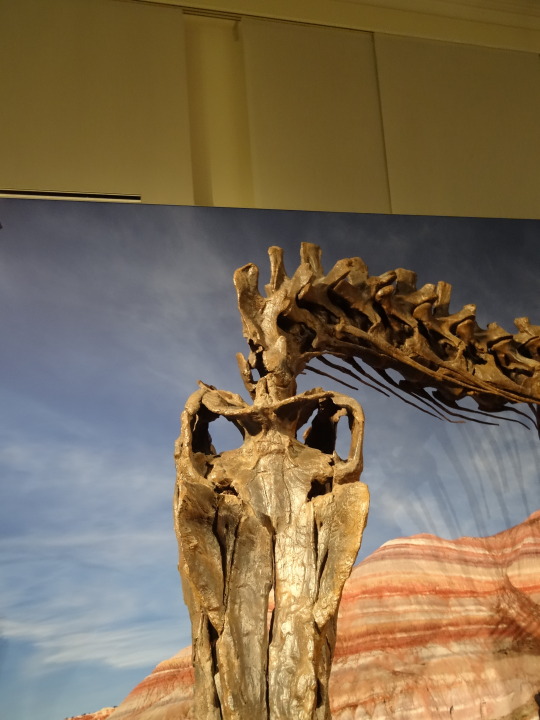
Maybe even better to look at is this 3d scan of Arkhane, from Brussels.
This could have been related to theroregulation, more display structures or simply further weight reduction.
There is quite a bit of wiggle room when it comes to the interpretation of dinosaur facial features and there is way too much already published and at the same time too little to put it all into a single blog post.
Also not all dinosaurus follow this patters, the cranial crests of oviraptorosaurs show no good indication for keratin crests for example. So it's better to say good bye to cassowary interpretations of these animals and instead cover them in skin and/or inflatable sacs, because these hollow chambers appear to be extensions of the sinuses. (my version of Corythoraptor on the right, Citipati from Wikipedia on the left.)


And then again in other theropods like Abelisaurs we see very rugose skull tops but without the striations you see on the lacrinals of Allosaurus, potentially indicating large scales. Here my, slightly over the top, interpretation of Skorpiovenator. And even then: within abelisaurus you have stuff like Carnotaurus which shows clear signs of keratin sheets on its horns.

This all has been complicated in recent years with new methods in bone histology, because as it turns out the internal structure of a bone can tell us stuff about it's outside, that's how we for example found out that Amargosaurus neck spines were no horns and probably conected with soft tissue, or that the osteoderms of notosuchians were covered by skin like in leatherback turtles.
Going back to Allosaurus and other allosauroids. Keratin sheets, scales, air sacs, all these were probably present in these animals, but their exact distribution is still a question of debate.

Here a paper from a few years back that maps para-nasal sinuses in extent and extinct archosaurus which gives you a little idea how complex their internal anatomy could get
https://anatomypubs.onlinelibrary.wiley.com/doi/pdfdirect/10.1002/ar.20794
549 notes
·
View notes
Text

STA MORENDO LA GENERAZIONE DI FERRO, PER DARE PASSO ALLA GENERAZIONE DI CRISTALLO.
La generazione che senza studi ha educato i suoi figli. Quella che nonostante la mancanza di tutto non ha mai permesso che mancasse l'indispensabile in casa.
Colei che ha insegnato i valori, a cominciare dall'amore e dal rispetto.
Stanno morendo quelli che potevano vivere con pochi lussi, senza sentirsi frustrati da loro.
Quelli che hanno lavorato fin da piccoli e hanno insegnato il valore delle cose e non il prezzo.
Muoiono quelli che hanno attraversato mille difficoltà e senza arrendersi ci hanno insegnato a vivere con dignità.
Quelli che dopo una vita di sacrifici e difficoltà se ne vanno con le mani rugose e la testa alta.
La generazione che ha insegnato a vivere senza paura, sta morendo.
~ Web ~ autore sconosciuto ~
41 notes
·
View notes
Text

my freaking corals
sibling system of the eights. they fell into fucking cyberspace after eights disappeared and since they look pretty similar and act the same sometimes everyone thought they were eight. Rip losers
#no id#undescribed#id needed#splatoon#splatoon 3#side order#coral collective [oc]#rugose [oc]#capri [oc]#acro [oc]#klug's ocs#oc stuff yay#ref sheet#oc ref sheet#klug's sketches
6 notes
·
View notes
Text

Progress Pride flag + rugose coral sketch
Personal use with credit welcome and encouraged 😄
#rugose coral#pride coral#rugose coral art#paleo coral#queer#stem#pride in STEM#queer in stem#sci art#science art#science illustration#queer in science#LGBT in STEM#palaeontology#paleontology#queer illustration#Queer Scientist#Queer Science#Queer Paleontology#Pride in paleontology
1 note
·
View note
Text
Moth of the Week
Large Emerald
Geometra papilionaria

[Right | Middle | Left]
The large emerald is a part of the family Geometridae. The species was first described in 1758 by Carl Linnaeus. Its common name references its color and size compared to other emerald moths. Its species name papilionaria is a reference to this moth’s butterfly like appearance according to Wikipedia. Adult moths rest with their wings angled and open like butterflies.
Description Newly emerged moths in this soecies are pale and dark green color with white patterned bands classed “fascia” which fades after a few days according to Wikipedia. The fascia change into broken lines of white, two on the hindwings and three on the forewings. However according to Butterfly Conservation, the large emerald is the one of the few emerald moths whose color does not fade.
Variations in color include:
ab. herbacearia Men.: the lines are “obsolete.” Orginally described as a separate species.
ab. cuneata Burr,: a large “web shaped” white spot in addition to the usual patterns.
ab. subcaerulescens Burr,: a more blue green color than normal.
ab. deleta Burr,: the “distal” (farthest from of the moths body) part of the moth’s white patterning is “obsolete.”
ab. subobsoleta Burr.: the white antemedian line one the foreign is “obsolete.”
ab. alba Gillm: the moth is entirely white and tinged with yellow.
Wingspan of 5.0 - 6.5 cm (≈2.36 - 2.56 in)
The larvae described as “rather stout, rugose” (corrugated) “the surface shagreened” (similar texture to a type of raw hide), “the head slightly notched, the setae” (bristle or hair like structures) “mostly with enlarged summits.” The larvae is a reddish brown when hibernating to match dead leaves and things and turns a green in the spring after hibernation.
Diet and Habitat This moth’s larvae feeds on birch, such as Downy Birch (Betula pubescens) and Silver Birch (Betula pendula), but also on Hazel (Corylus avellana), Alder (Alnus glutinosa), rowan, and possibly Beech (Fagus sylvatica).
This moth is present in the Palearctic region and the Near East. They inhabit deciduous forests, heathlands, marshland, in settlements close to woodland, grassland, well-established hedgerows, gardens, and parks.
Mating This species is seen flying at night from June to August in Britain. The egg is broad at one end and more flattened at the other with an oval like shape.
Predators These moths fly at night and are attracted to light. Adults occasionally fly in the tree tops on warm, sunny days. Larvae camouflage themselves during hibernation, being red-brown to match dead leaves and twigs and green to match spring leaves after hibernation. Not specific predators are listed.
Fun Fact The large emerald moth has 4 subspecies:
G. p. papilionaria: found in Europe to the Urals, Southwest Siberia, Turkey, Caucasus, Transcaucasus
G. p. herbacearia Ménétries: described in 1859, found in West Siberia - Southeast Siberia, Korea
G. p. subrigua: described in 1935 by Proute, found in Japan
(Source: Wikipedia [1][2][3][4], Butterfly Conservation, Amateur Entomologists' Society)
#libraryofmoths#animals#bugs#facts#insects#moth#lepidoptera#mothoftheweek#large emerald#Geometra papilionaria#geometridae#tw bugs
33 notes
·
View notes